|
PZL.42
Polish Light Bomber
& Reconnaissance Plane
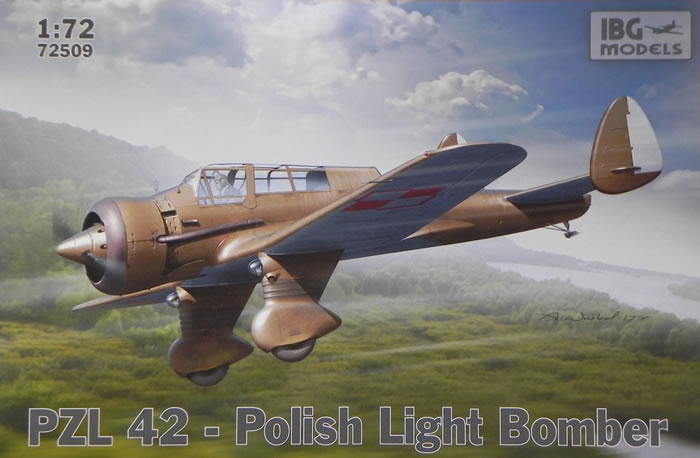
IBG Models, 1/72 scale
S
u m m a r y |
| Description and Catalogue Number: |
IBG Models Kit No. 72509 - PZL.42 Polish Light Bomber & Reconnaissance Plane |
| Scale: |
1/72 |
| Contents and Media: |
50 parts in tan plastic, 12 parts in clear plastic, one photo-etch fret and one decal sheet with markings for two aircaft. |
| Price: |
GBP £10.40 EU price (GBP £8.67 Export Price) plus shipping from Hannants
USD$15.00 plus shipping from Roll Models
9.50 Euro from IBG Models Website
|
| Review Type: |
FirstLook |
| Advantages: |
The kit offers finely inscribed details and a straightforward and simpe build of a rare pre WWII aircraft. |
| Disadvantages: |
None noted. |
| Conclusion: |
This is a quality kit of an esoteric aircraft. Hats off to the crew at IBG for producing it. With little effort it will build into an impressive model that’s not often (ever?) seen on the show tables. |
Reviewed by John Miller

Airfix's 1/72 scale Beaufighter TF.X will be available online from Squadron.com
The PZL.42 was a derivative of PZL.23 Karas’ that lacked the latters ventral bombardier’s gondola but was modified by the addition of a twin-tail. The modifications failed to improve performance as only one was produced and tested by PZL.
The primary design, the PZL.23 Karas’, was developed by the PZL firm under the guidance of Chief Designer, Stanislaw Prauss. The design culminated in the P.23/III, which was accepted for production in 1935 under the name PZL.23A Karas’ (Crucian Carp).
The first production series PZL.23A was fitted with a Bristol Pegasus IIM2 radial produced in Poland under license. This engine proved unreliable and subsequent PZL.23A’s were fitted with the newer Pegasus VIII engine.
The crew of three consisted of a pilot, bombardier, and rear gunner. The bombardier's station, situated in a gondola underneath the hull, permitted him to operate an underbelly machine gun. The deletion of the bombardiers’ position and the ventral gondola was a primary modification of the PZL.42 prototype.
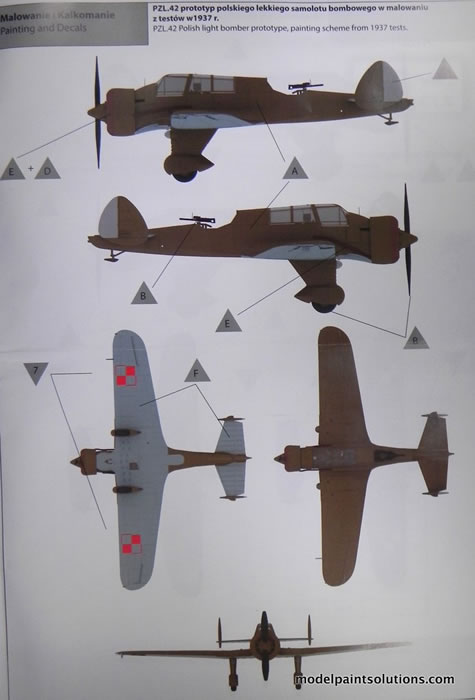
The final version, the PZL.23B Karas’ II was equipped with the Gnome-Rhone engine and had a respectable speed of 365 km/h and over-all better performance than the smaller-engined PZL.23A Karas’ I. Regardless of the engine utilized, the aircraft always retained a two-blade propeller.
A total of 40 PZL.23A’s were produced in 1936. By 1937, an additional 210 PZL.23B’s were delivered to the Polish Air Force. The twin tailed version of the PZL.23, the PZL.42 was produced and tested during this period but was not adopted for production. Thus the Karas’ with a conventional tail and sporting a ventral gondola was Poland's primary light bomber and reconnaissance aircraft when Germany invaded Poland on 1st September 1939.
(Edited from Wikipedia)
First impressions are overwhelmingly positive, as they were when opening the related PZL.23 Karas’ by IBG. Both are just beautiful models begging to be built.
The sprues are separately bagged as are the decals and PE fret.

The plastic parts are beautifully molded with no flash. As with the PZL.23, the plastic seems a bit brittle so caution should be exercised when removing parts from the sprues.
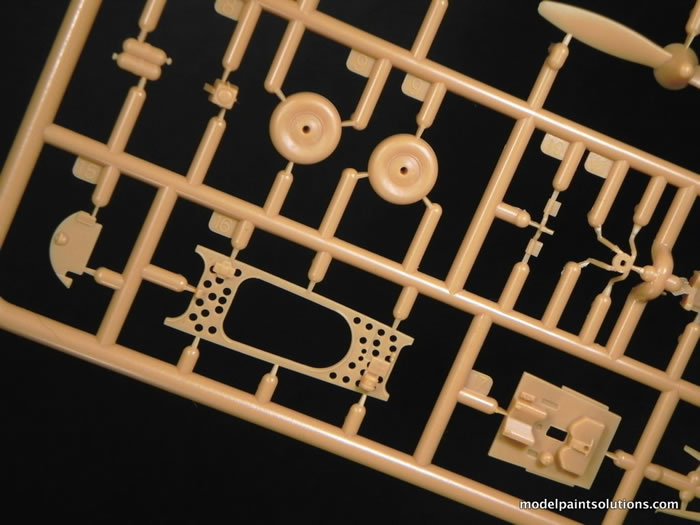
All the recessed surface details are very finely rendered and care will be required to not obliterate them with a heavy coat of primer and/or paint. The recessed wing details replicating the novel spar-less construction method are particularly well done.
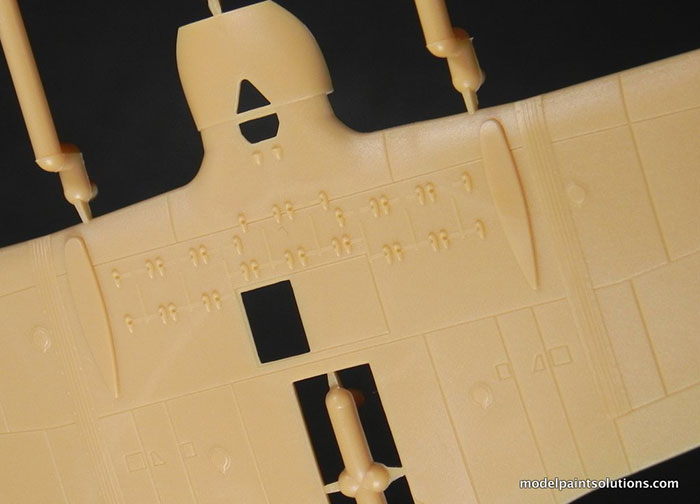
The cockpit floorboard, side panels are nicely detailed. The canopy is crystal clear with scale-appropriate framing.
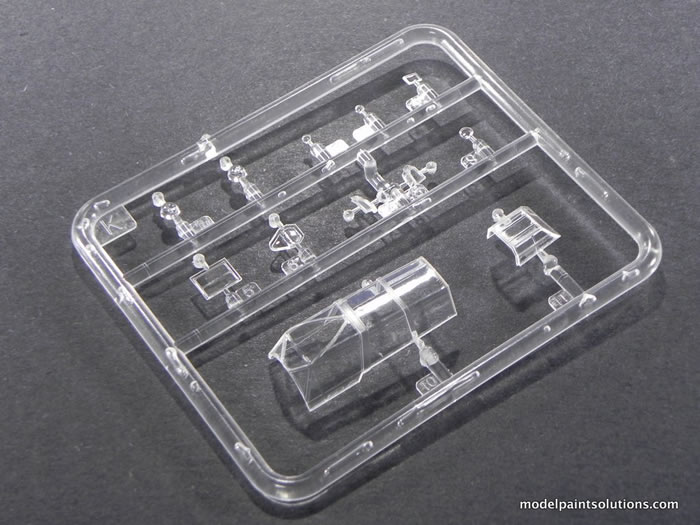
The propeller blades are thin and to scale. Similarly, the trailing edges of the wings as well as the twin elevators and rudders, are appropriately thin.
Construction is conventional starting with the pilot’s office thence the fuselage and wing. No surprises here. Just like it’s sister kit, the PZL.23, this looks to be a very straightforward build, with no apparent nasty surprises.
Markings
The decals are printed by Techmod and show excellent registration with crisp details including the instrument panel.
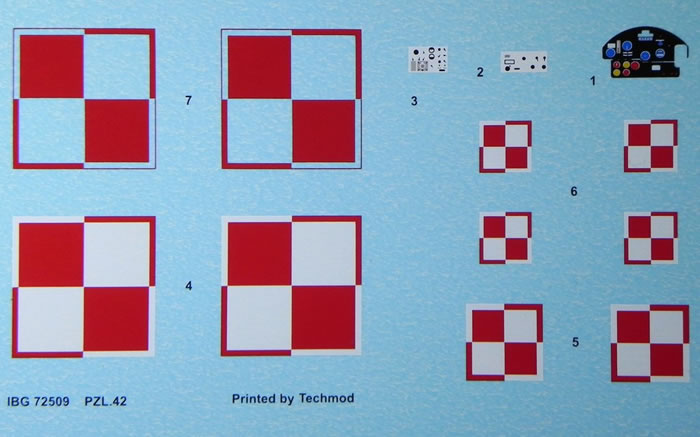
Markings for two schemes worn by the prototype are provided:
-
“Painting scheme from 1937 tests”
-
“Prototype at Deblin, 1939”
Both utilize the well-known scheme of Polish Khaki uppers with Light Blue-Grey lowers but differ in the use of Polish checkerboard national markings (with and without a white).
Just as it’s sister kit the PZL.23 Karas, there’s certainly a lot to like in this box. The detail is abundant, restrained, and to scale. Construction is straightforward and simple. It’s refreshing to see a quality, well-engineered model of a lesser-known pre WWII prototype: highly recommended.
For more information on this review go to Model Paint Solutions.
Purchased by reviewer.
Text and Images Copyright © 2017 by John Miller / Model Paint Solutions
Page Created 13 October, 2017
Last updated
13 October, 2017
Back to HyperScale Main Page |
